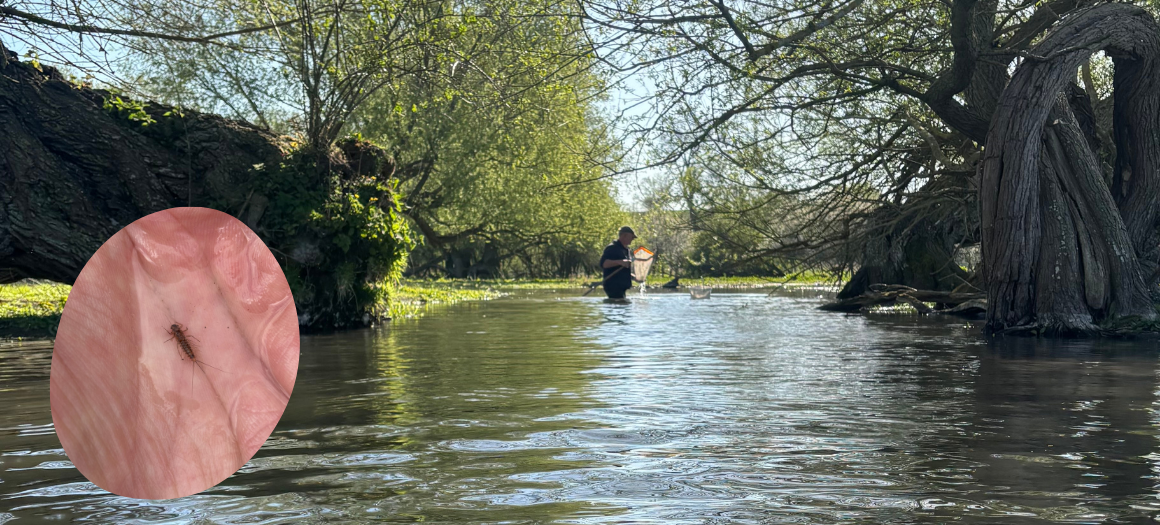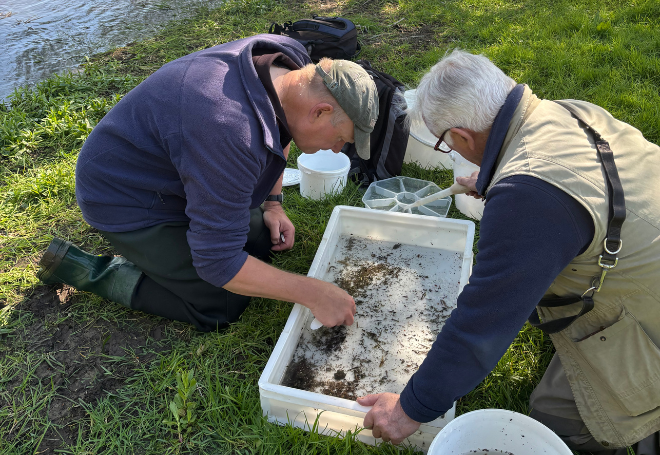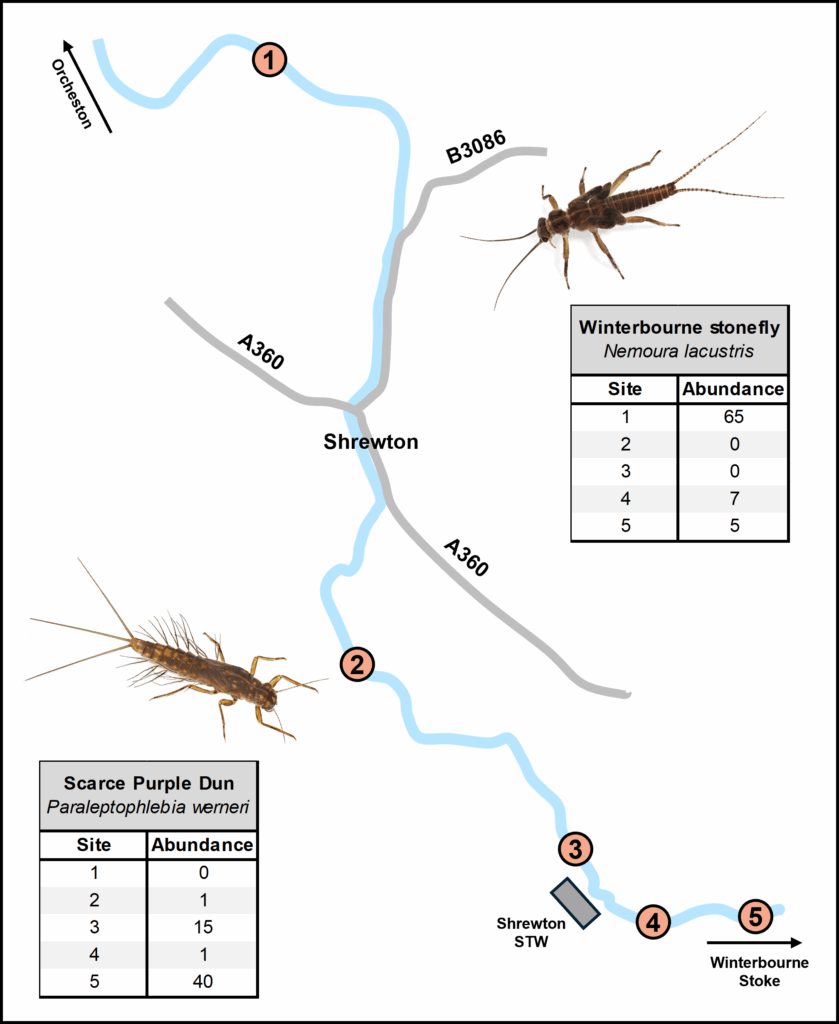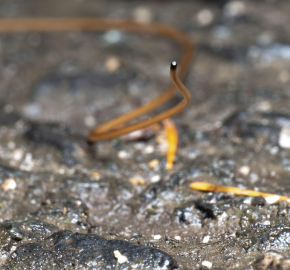In Search of the Scarce Purple Dun: Hunting for mayflies in Wiltshire’s Winterbournes

On a sunny April morning, I set out with Matt Owen-Farmer (WildFish SmartRivers trainer) and Dr Cyril Bennett MBE (our resident mayfly expert) in search of a rare species: the scarce purple dun (Paraleptophlebia werneri). This mayfly is found only in the highly specialised habitats of our winterbourne chalk streams. It hasn’t been recorded in our recent SmartRivers citizen science surveys, and although Wessex Water had previously reported sightings finding the species, we decided it was time for a more targeted search.
A closer look at the scarce purple dun
The scarce purple dun is a fascinating species. Like all mayflies, the adults emerge for just a short window each year, after spending most of their lives as aquatic nymphs among the gravel and weed beds of clean, well-oxygenated streams. But the scarce purple dun is special. It must complete its life cycle before its river habitat dries out. So, it’s a race against time to hatch, grow, emerge as an adult, and then breed before the water vanishes.
The River Till in Wiltshire is a classic winterbourne chalk stream, with upper reaches that flow only seasonally as the water table in the underlying chalk aquifer drops through the warmer months.
Interestingly, the Till was one of just two UK rivers where the scarce purple dun was first identified back in 1939. That historic link made it even more concerning that our citizen science surveys hadn’t picked it up, particularly given our concerns about local water quality.
Had it quietly disappeared? Or were we simply looking in the wrong place at the wrong time?
Searching for the missing mayfly
Over the course of the morning, we surveyed five sites along the river, taking kick samples at each one and sorting through the invertebrates in trays on the bank. At every stop, we searched for nymphs of the scarce purple dun.

The family Leptophlebiidae, also known as the “prong gills”, are relatively easy to identify thanks to their distinctive gill structures, though further examination is needed to confirm species. Among the usual suspects of caddisflies and freshwater shrimp we found them: several nymphs that clearly matched descriptions of scarce purple dun.
As a bonus, we also recorded another rare specialist species, the winterbourne stonefly (Nemoura lacustris).
The urgent need to protect our winterbourne chalk streams
Winterbourne chalk streams are not only rare but ecologically unique. Their seasonal flow creates a dynamic environment that supports highly specialised species like the scarce purple dun. Sadly, these habitats are increasingly under threat from climate change, groundwater abstraction, pollution, and habitat alteration. The presence of these rare specialist species is more than just a curiosity; it signals a functioning ecosystem.
Yet winterbournes and other temporary streams have historically been overlooked in formal monitoring. Standard protocols struggle to account for the variability in flow. You might arrive to sample and find a dry riverbed, or a stretch where water has only just returned, meaning only the hardiest or most mobile species have recolonised. This can skew traditional ecological assessments.
SmartRivers: smart science for volunteer monitoring
As part of our SmartRivers programme, we’re developing bespoke protocols to help volunteers monitor these sensitive habitats more effectively. For example, only sampling once flow has been present for a defined period of time. However, after attending the 10th Aannual Temporary Rivers and Streams Meeting at Nottingham Trent University, it’s clear that many questions remain about how best to monitor and protect these unique and complex ecosystems.
The Environment Agency currently has a team working on protocols for temporary streams in England. While this work is still in early stages, they are exploring a range of strategies to assess both the flowing and dry phases. There’s a real opportunity here for citizen scientists to help pioneer these methods. Passionate local volunteers aren’t just ‘boots on the ground’, they bring knowledge and connection to the rivers and their histories.
Finding the scarce purple dun is not the end of the story. It’s the beginning of a renewed effort to understand and protect these species and the vulnerable habitats they depend on.

Our SmartRivers citizen science surveys will continue on the River Till, as well as on other winterbourne stretches monitored by groups on rivers like the Ems and Fonthill Stream. We’re also welcoming new local groups interested in monitoring winterbournes and other temporary streams. As well as working with academic partners and regulatory bodies for the benefit of these special habitats.
For now, we’ll end on a positive note. Finding the scarce purple dun right where it belongs: in the River Till.
Follow the link below to find out more about how SmartRivers could support action to protect your local river.
Find Out More




